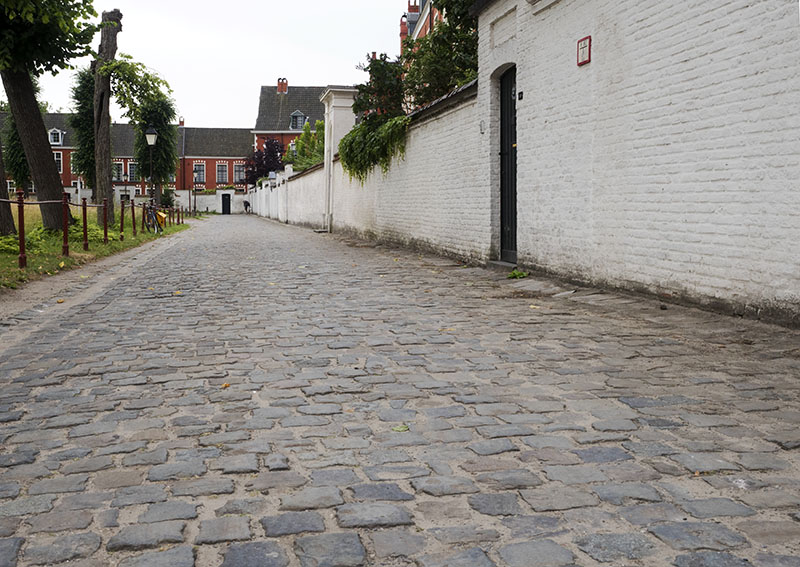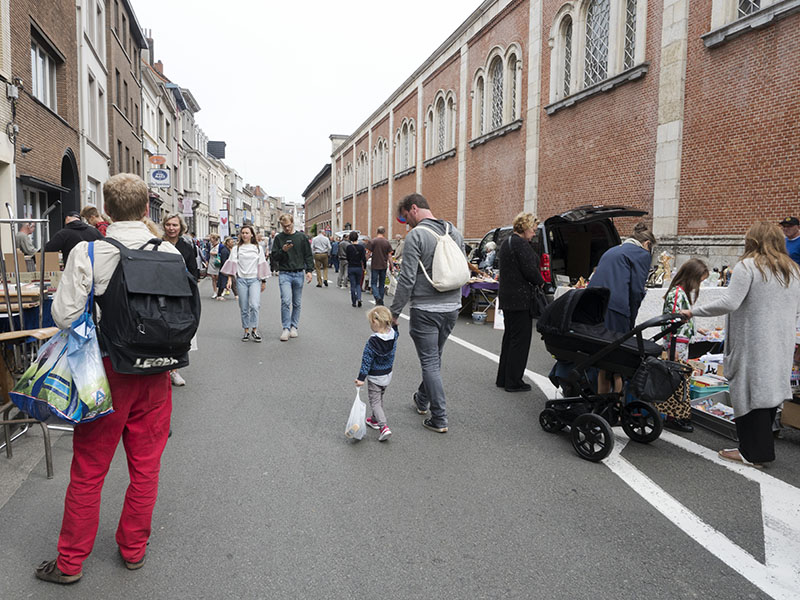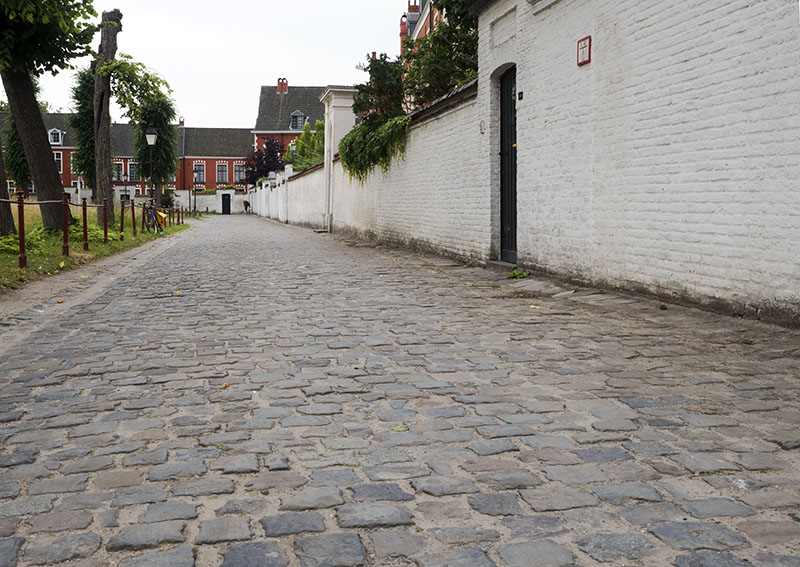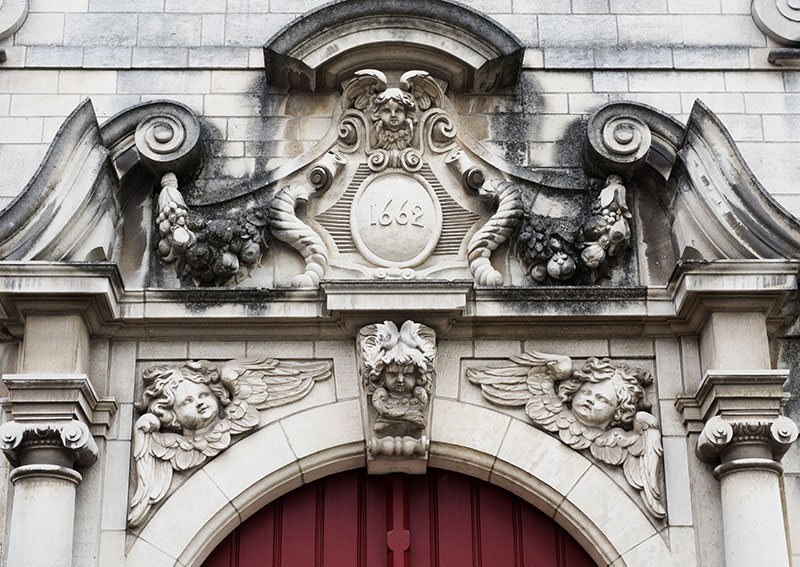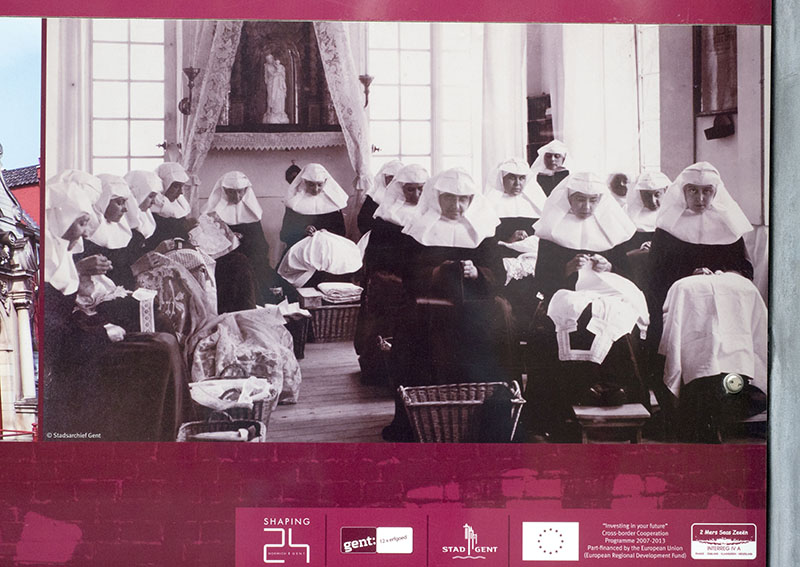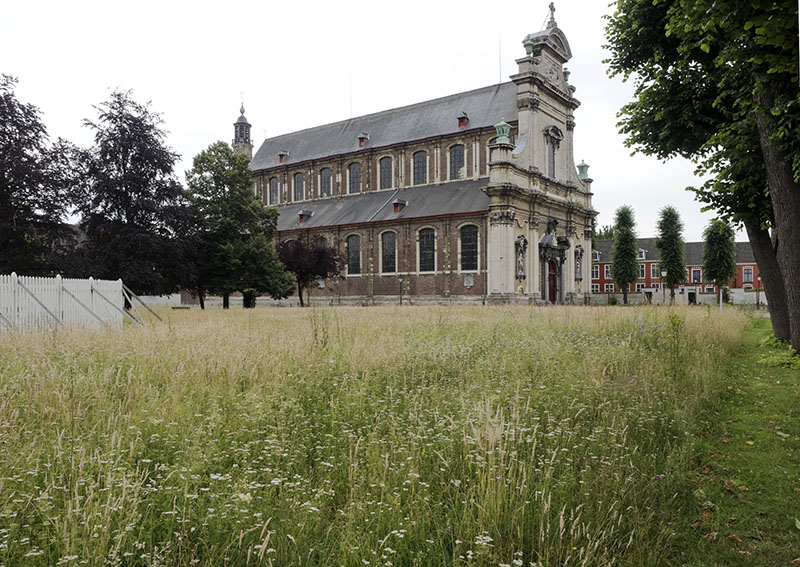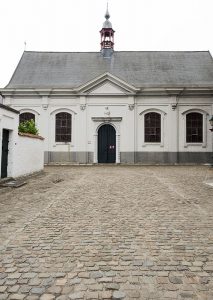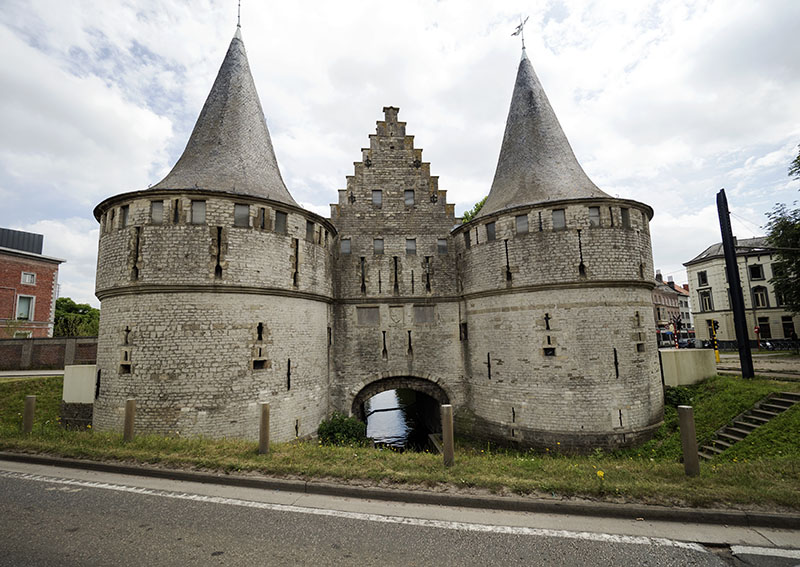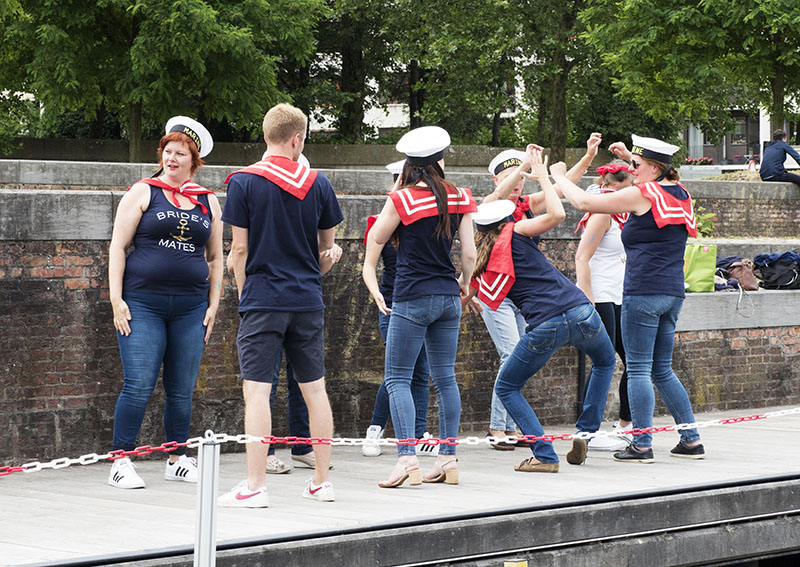As crowds poured into the township, it was bedlam: a case a kamikaze for those on bikes, as they avoided the pedestrians who, without looking, stepped off curbs and suddenly appeared in front of them. If one prefers a quieter visit, Monday to Thursday is the key we decided.
It was to an older smaller UNESCO listed beguinage that our travels took us today.
Hidden behind even higher walls than that of yesterday, unless the traveller knew the community resided behind, they would have passed by unaware.
Compared to the dark brickwork of Great St Elizabeth’s, the whitewashed walls of Klein Beguinage, Our Lady Ter Hoyen, had a light spacious air to it.
Even today, whilst the Beguines have all passed on, the modern community living within can still experience that air of peace experienced behind the locked doors.
Founded in approximately 1234 by the then Countess of Flanders, this community consisted of one hundred homes, infirmary, a church yard that is now a circular field, a garden and the church.
Riding around on the cobbled streets, we noted the continued renovation that is returning the buildings and garden to life.
Remnants of a military fortification constructed in the 1490s, once spanning the Lieve River, the Rabot is an impressive reminder of the arch, gate and lock that once provided access to the city of Ghent from northern townships and the North Sea.
We loved this sight on one of the canals.
On arriving at Gratis, some dancers kept us entertained as they worked on creating a video.
